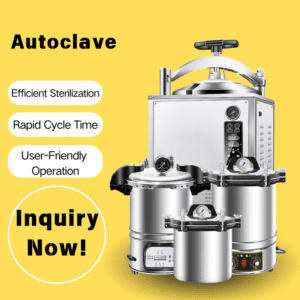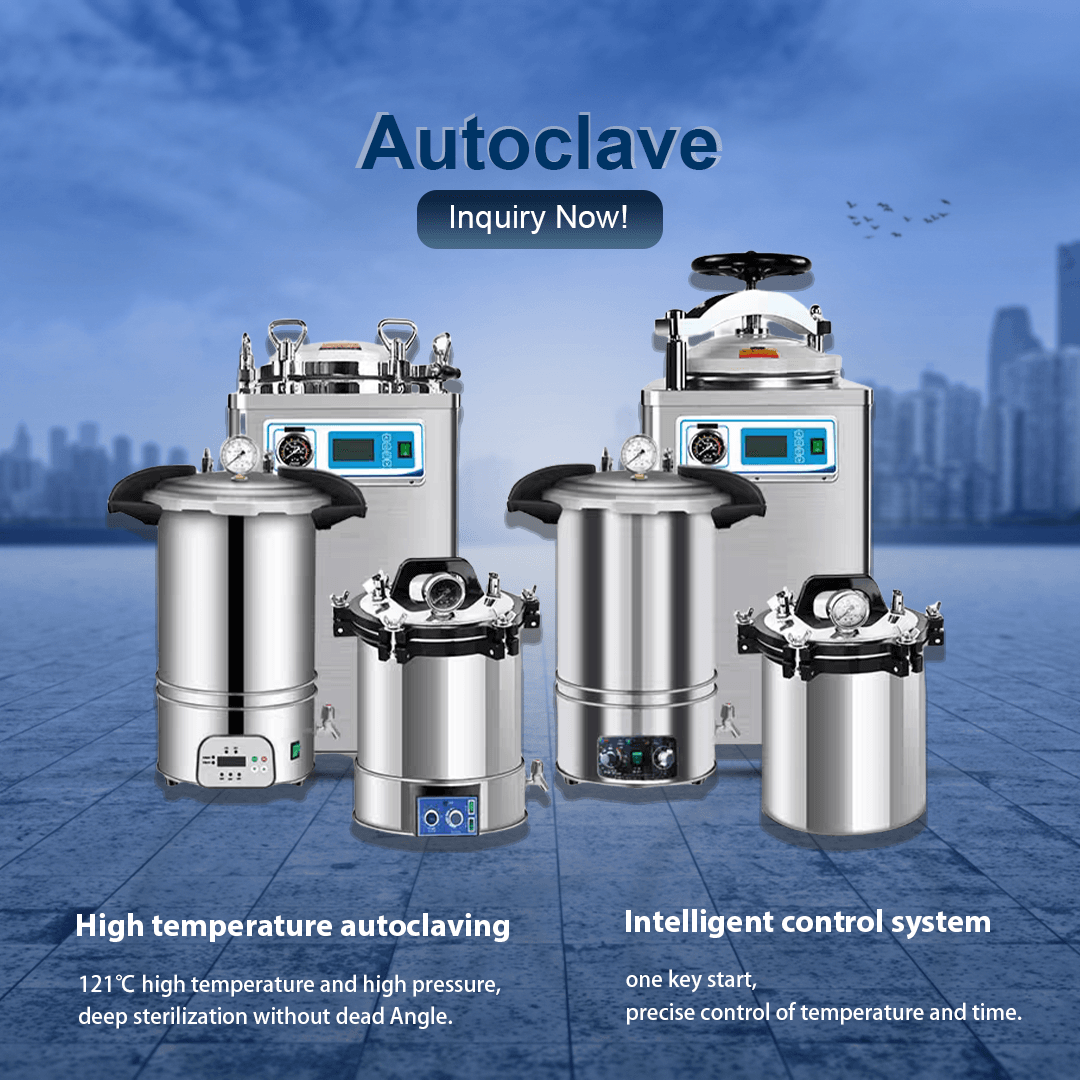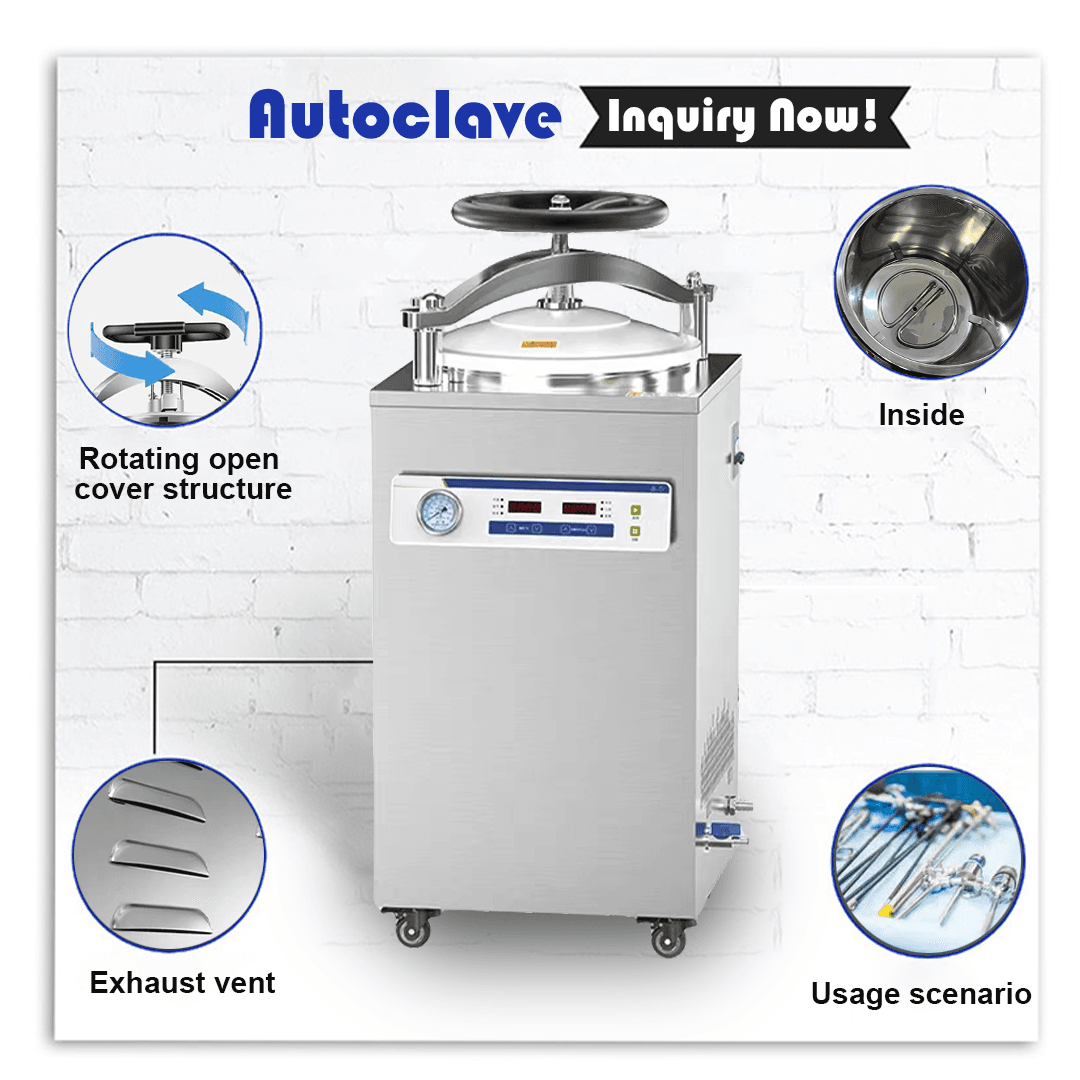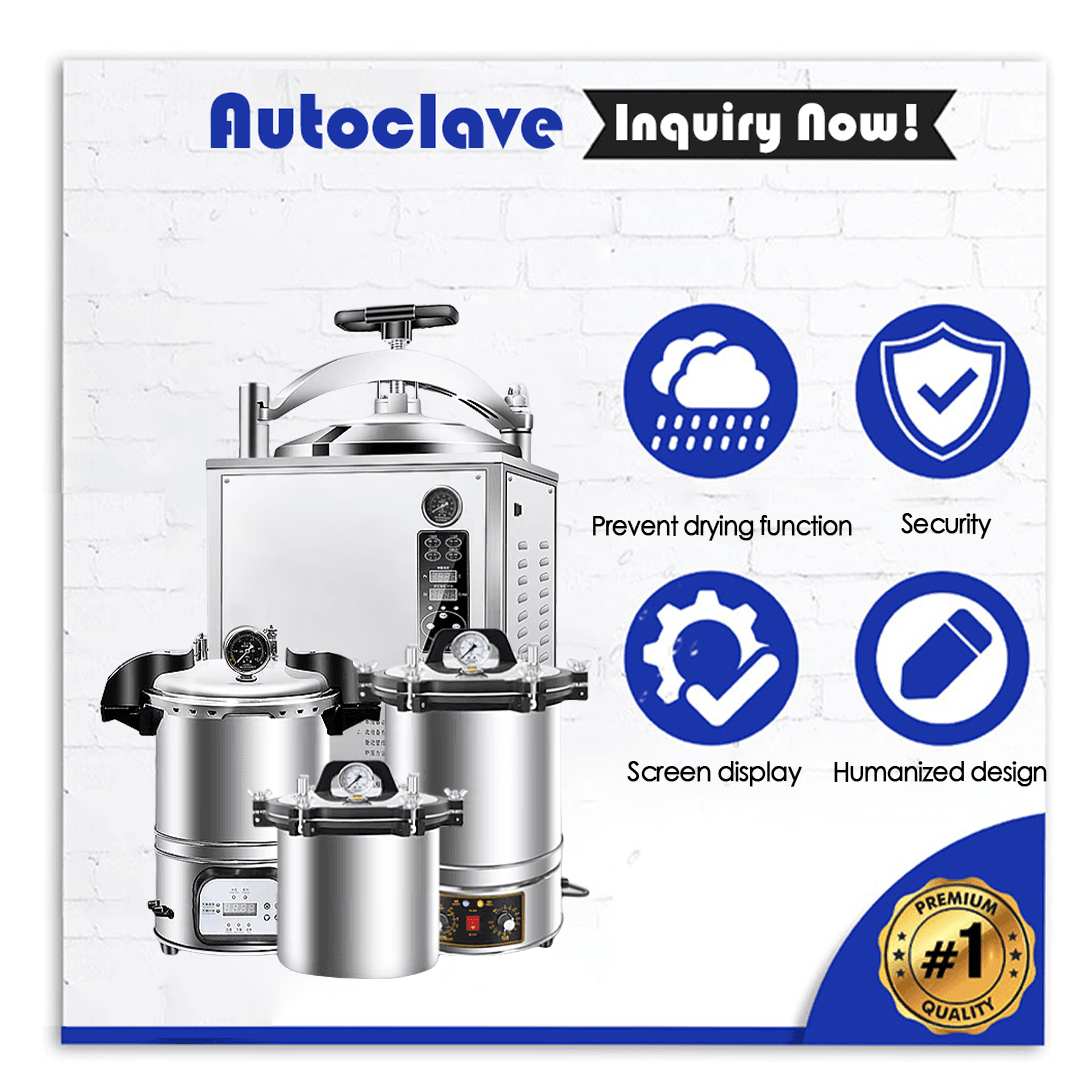
Autoclaves deliver exceptional performance but they remain out of reach for some places. Budget-restricted laboratories and remote medical facilities alongside small clinics often lack sufficient infrastructure and funding for equipment acquisition and maintenance. Power outages and equipment failures can make autoclaves temporarily unavailable while requiring the use of different sterilization techniques. By understanding these challenges distributors can provide specialized advice and solutions to clients who encounter these obstacles.
The requirement for sterilization remains absolute even when resources are limited. Unsterilized tools or materials can result in patient infections while producing false research findings and negatively impacting healthcare delivery. Alternative sterilization techniques help facilities without steam-based systems maintain their operations. Procurement professionals who understand these sterilization methods can assist clients operating in various healthcare environments including urban hospitals and rural health posts.
Mastering multiple sterilization methods increases your worth as a dependable medical supply chain partner. This knowledge allows you to meet diverse client demands by providing effective alternatives when standard sterilization equipment cannot be used. Dealers can establish themselves as expert problem-solvers when they offer alternative solutions that meet safety guidelines and comply with regulatory standards.
One of the most basic and readily available methods for sterilization of instruments and materials operates without requiring specialized equipment by using boiling water. Boiling water at 100°C (212°F) for 10 to 30 minutes succeeds in destroying most bacteria, viruses, and spores. The boiling water sterilization process is ideal for medical and laboratory heat-resistant metal instruments as well as glassware.
Prepare the Items: It is essential to clean instruments completely to eliminate visible dirt, blood, and organic matter which can protect microorganisms from heating effects.
Use a Suitable Container: Use a large pot or container filled with distilled or clean water to place items and prevent mineral buildup and contamination.
Heat to Boiling: The water should reach a rolling boil and remain at that temperature for a minimum of 10 minutes. At higher altitudes where water boils at reduced temperatures you should increase the boiling duration to between 20 and 30 minutes.
Cool and Dry: Use tongs or heat-resistant gloves to remove items from heat sources to prevent burns and then let them air-dry on a sterile surface or cloth.
Store Properly: Use sealed containers or sterile wraps to store items that have been sterilized to prevent them from becoming recontaminated.
Certain bacterial spores that resist heat survive boiling while steam-based sterilization methods achieve more complete sterility. The method is inappropriate for materials sensitive to heat including plastics and electronic components. Distributors should guide clients to employ boiling as either a temporary solution or supplementary method and educate them about its precise scope and limitations.
Dry heat sterilization destroys microorganisms by using high temperatures in ovens or incinerators to achieve oxidation. This sterilization method requires temperatures between 160°C and 180°C (320°F to 356°F) sustained for one to two hours to properly sterilize metal instruments alongside glassware and particular heat-resistant powders or oils. Basic kitchen ovens and laboratory ovens provide settings where this method can be successfully used.
Clean the Items: Cleaning instruments by removing all debris and organic material ensures direct heat exposure during the process.
Arrange Properly: Position instruments on trays or racks within the oven without overlapping to ensure even heat distribution.
Set Temperature and Time: The oven should reach the specified temperature setting (for instance, 170°C) and sustain that temperature for the entire duration of one hour.
Cool Gradually: Items should be allowed to cool either inside the oven or within a clean space to prevent thermal shock and avoid recontamination.
Store Safely: Place cooled items into sterile containers or wrap them for storage until they are needed.
The dry heat sterilization method needs extended exposure durations and does not work for liquids or heat-sensitive materials. Standard ovens that lack sterilization design features show uneven heating patterns. Clients receive expert advice from procurement specialists to choose suitable tools and monitoring techniques that increase the efficiency of dry heat methods.
The process of chemical disinfection requires liquid or gas agents to destroy microorganisms present on surfaces and instruments. Alcohol solutions with 70-90% ethanol or isopropyl alcohol along with chlorine-based compounds and hydrogen peroxide and formaldehyde gas serve as common chemical disinfection agents. Chemical disinfection serves as the optimal choice when dealing with items that cannot withstand heat or when heat sterilization methods are not possible.
Select the Right Agent: Select a chemical agent that matches both the material properties and contamination type. Surface disinfection can be efficiently achieved with alcohol while chlorine solutions provide comprehensive microbial control.
Clean First: Eliminate all visible contaminants and residues from objects before disinfection because organic matter decreases chemical disinfectant effectiveness.
Apply the Agent: Thoroughly cover items by immersing or applying the solution to surfaces while maintaining full coverage during the suggested contact period which varies between 10 to 30 minutes based on the specific disinfectant.
Rinse if Necessary: After using liquid disinfectants clean items with sterile water to remove residuals that may cause skin irritation or application interference.
Dry and Store: Place items to air dry on sanitized surfaces before storing them in a sterile area to avoid contamination.
Chemical disinfection methods sometimes fall short of achieving complete sterility because they do not always destroy all spores and resistant pathogens. Certain disinfectants have toxic and corrosive properties that demand precise handling procedures and adequate ventilation systems. Dealers supply both protective equipment and safety instructions to their clients to ensure that chemical disinfectants are used safely.
UV-C light (ranging from 200-280 nm wavelengths) harms microorganism DNA which results in their inability to reproduce. Surface sterilization of tools, workspaces and air in enclosed environments often employs this method. You can find UV lamps and handheld devices everywhere which makes them a workable solution for places lacking heat-based sterilization gear.
Prepare the Area: Ensure surfaces and items remain free of dust and debris which could prevent UV light from penetrating.
Position the UV Source: To achieve effective UV exposure position the lamp or device at a distance between 1 and 2 meters from the target area.
Expose for Adequate Time: The manufacturer’s instructions dictate exposure time which varies between 15 to 30 minutes based on light intensity and distance.
Protect Personnel: Direct UV light exposure can lead to skin burns and damage eyesight. Always protect people from UV light exposure by using protective shields or by operating devices when the area is empty.
Store Items: Maintain the sterility of treated items by keeping them in a clean enclosed space.
UV radiation restricts its sterilization abilities to surfaces and fails to reach areas within shadows and opaque or creviced spaces. The method does not provide full sterilization for complex tools with multiple components. Distributors should teach clients how to use UV radiation in combination with other sterilization techniques to maximize effectiveness while highlighting safety protocols to avoid exposure risks.
The sterilization of liquids through filtration involves passing them through membranes with pore sizes ranging between 0.22 and 0.45 micrometers which effectively trap microorganisms. Heat-sensitive solutions such as culture media and pharmaceutical preparations benefit from this method in both laboratory and medical environments.
Select the Right Filter: Select a filter whose pore size matches the requirements for trapping specific microorganisms.
Prepare the Liquid: Remove large particles which can block the filter by pre-filtering the liquid beforehand.
Set Up the System: Pass the liquid through the membrane using either a syringe filter system or a vacuum filtration apparatus or a gravity filtration setup.
Collect in Sterile Container: Place the filtered liquid into a container that has been sterilized beforehand to maintain its sterility.
Store Properly: Protect the liquid from microbial contamination by sealing it and storing it in conditions that prevent microbial growth, including refrigeration when possible.
Solid instruments and surfaces remain unsterilized by filtration because this process applies exclusively to liquids. Effective results depend on maintaining sterile conditions after the filtration process. Procurement experts can assist clients requiring liquid sterilization by suggesting appropriate filtration systems along with proper storage options.
Handling toxic chemicals and harmful radiation or hot items is typical when using alternative sterilization methods. Protective equipment including gloves, goggles, and masks must be used by staff during chemical agent operations while proper ventilation systems must be maintained. Dealers provide clients with safety equipment and educational resources to reduce hazards throughout the sterilization procedures.
Different sterilization methods cannot be applied universally to all materials. Plastics get damaged through heat-based methods and metals corrode while sensitive components degrade from chemical agents. Check material compatibility before moving forward to preserve instrument integrity. Distributors supply compatibility charts or guidelines to help clients identify the best sterilization method for their specific requirements.
Environmental and health regulations require proper disposal methods for waste or emissions produced by some sterilization techniques like chemical disinfection. Educate clients about local regulations concerning the management and disposal of sterilization byproducts to ensure compliance. Facilities can access support and resources from procurement specialists to maintain regulatory compliance when utilizing alternative sterilization methods.
Steam-based systems produce superior sterility than alternative methods which fail to eliminate resistant pathogens. Achieve better sterilization results by using several techniques in sequence such as chemical disinfection followed by UV exposure. Distributors provide guidance to clients about layered strategies that improve results.
Dry heat sterilization methods take substantial time to complete but chemical disinfection requires access to particular disinfectants. Design work processes that consider these limitations while ensuring access to materials that are easily obtainable. Dealers assist clients in determining effective methods tailored to their specific operational requirements.
Improper handling or storage will cause sterilized items to become contaminated immediately. Keep sterilized items safe by storing them in sterile wraps or containers or using specially designated clean storage areas. Procurement specialists should provide storage options that ensure items remain sterile after they have been processed.
Medical equipment distributors, dealers, and procurement specialists serving healthcare and laboratory environments find mastering non-autoclave sterilization methods exceptionally beneficial. Implementing alternative sterilization techniques like boiling, dry heat, chemical disinfection, UV radiation and filtration allows you to help clients uphold essential hygiene standards without needing advanced equipment. These methods differ in their specific uses and advantages as well as limitations which must be evaluated to ensure both safe and effective results. This knowledge positions you to provide actionable solutions and expert advice while strengthening your position as a reliable collaborator in medical supply management. Questions about sterilization techniques or needs for dependable equipment and accessories for your clients should be directed to us. Contact us via [inquiry@shkeling.com](mailto: To reach out for further details send an email to inquiry@shkeling.com, connect through WhatsApp at 8618221822482, or visit https://autoclaveequipment.com/. Our innovative solutions exist to help you reach your business goals and maintain healthcare provider safety.
1. Sterilization without an autoclave becomes essential in situations where autoclave equipment is unavailable because of financial limitations, spatial constraints or mechanical failure. Sterilization without an autoclave becomes essential when facilities face economic, spatial constraints or logistical problems or if equipment maintenance causes downtime.
2. Boiling and dry heat from standard ovens represent the most accessible sterilization methods for heat-resistant items when specialized equipment is unavailable. The most accessible ways to sterilize heat-resistant items in resource-limited environments include boiling water and using standard ovens for dry heat sterilization.
3. Can chemical disinfection achieve full sterility? Chemical disinfection does not eliminate all resistant pathogens or spores which makes this method more appropriate for high-level disinfection instead of complete sterilization.
4. The effectiveness of UV radiation for sterilizing complex instruments is insufficient because it cannot penetrate surfaces to reach all areas. UV radiation works only for surface sterilization because it fails to penetrate shadows and crevices which makes it ineffective for complex and opaque objects.
5. Distributors have the ability to assist clients with alternative sterilization methods through training programs and supplying necessary safety guidelines and appropriate accessories. By offering training programs alongside safety protocols and suitable accessories distributors enable clients to carry out secure sterilization practices without needing complex machinery.
6. When using chemical agents for sterilization proper protective gear must be worn and adequate ventilation needs to be ensured while following disposal regulations to manage toxic or corrosive chemicals safely. Protective gear must be worn in addition to maintaining proper ventilation and following disposal regulations when handling toxic or corrosive chemicals during sterilization to ensure safety.

Healthcare facilities must adhere to rigorous hygiene and sterilization standards without exception. Medical equipment distributors and procurement professionals must understand the tools that maintain standards to deliver value to healthcare

Maintaining sterile medical tools and equipment stands as the most important practice for preventing infections and ensuring patient safety in healthcare settings. Medical equipment distributors along with dealers and procurement

The fast-paced healthcare sector operates under strict regulations which demand that sterility maintenance stands as a primary concern to protect patient safety and ensure compliance with operational standards. Medical equipment

Sterilization equipment serves as an essential tool in healthcare settings to maintain cleanliness standards and protect patients. Medical equipment distributors together with dealers and procurement specialists need to know the

Autoclaves serve as essential components of sterilization processes in healthcare facilities through high-pressure steam to destroy pathogens on medical instruments and other materials. Medical equipment distributors and procurement specialists must

Healthcare environments must prioritize sterilization because it protects patients and staff by removing infectious pathogens from medical devices and materials. The autoclave stands out as one of the best tools